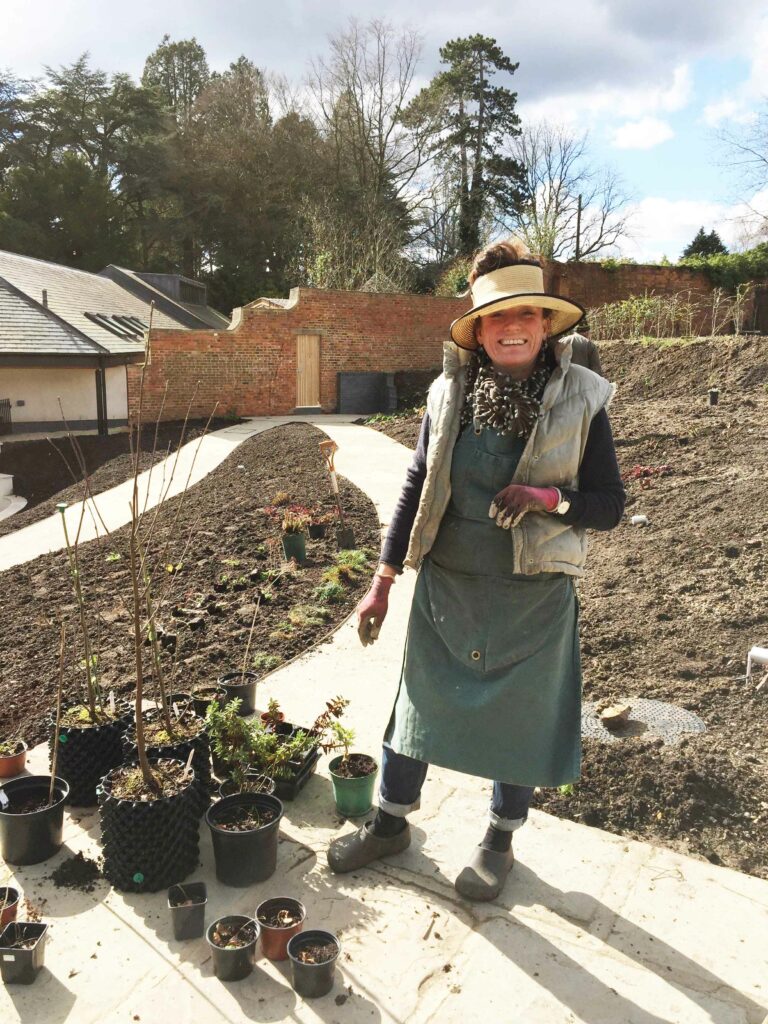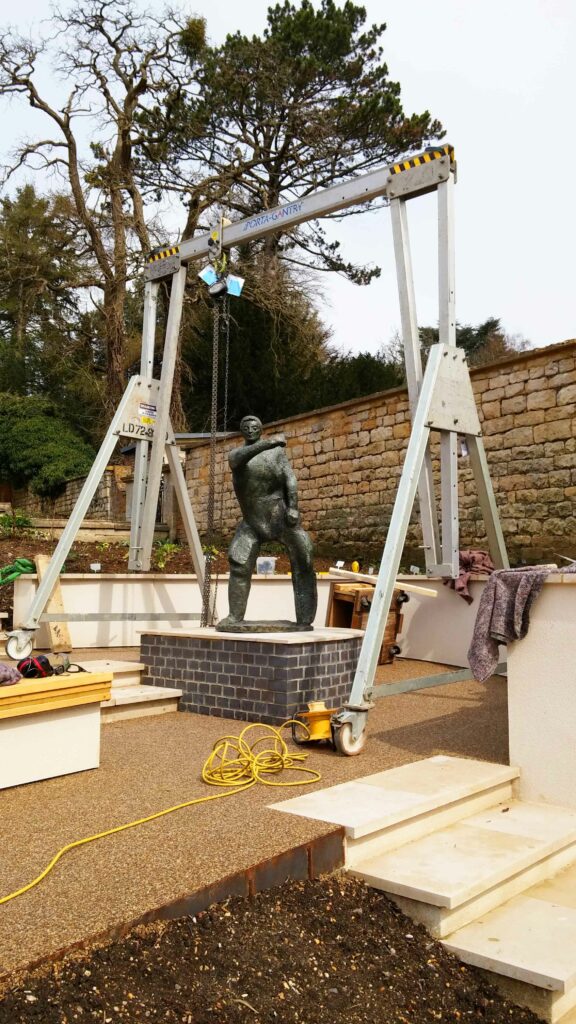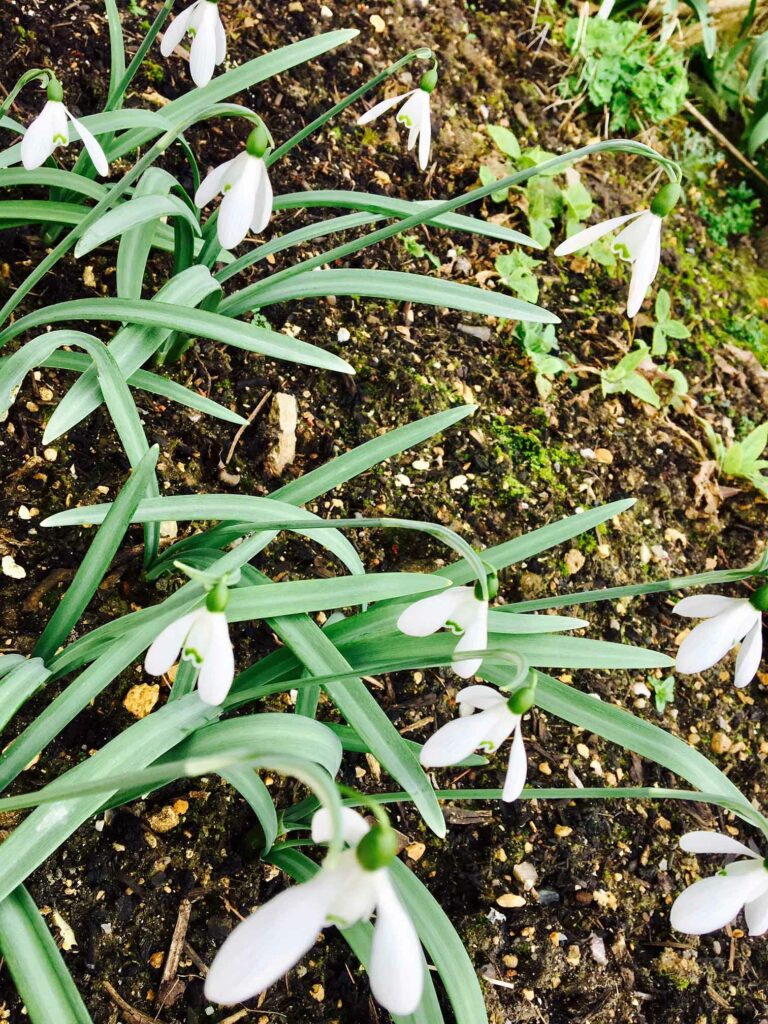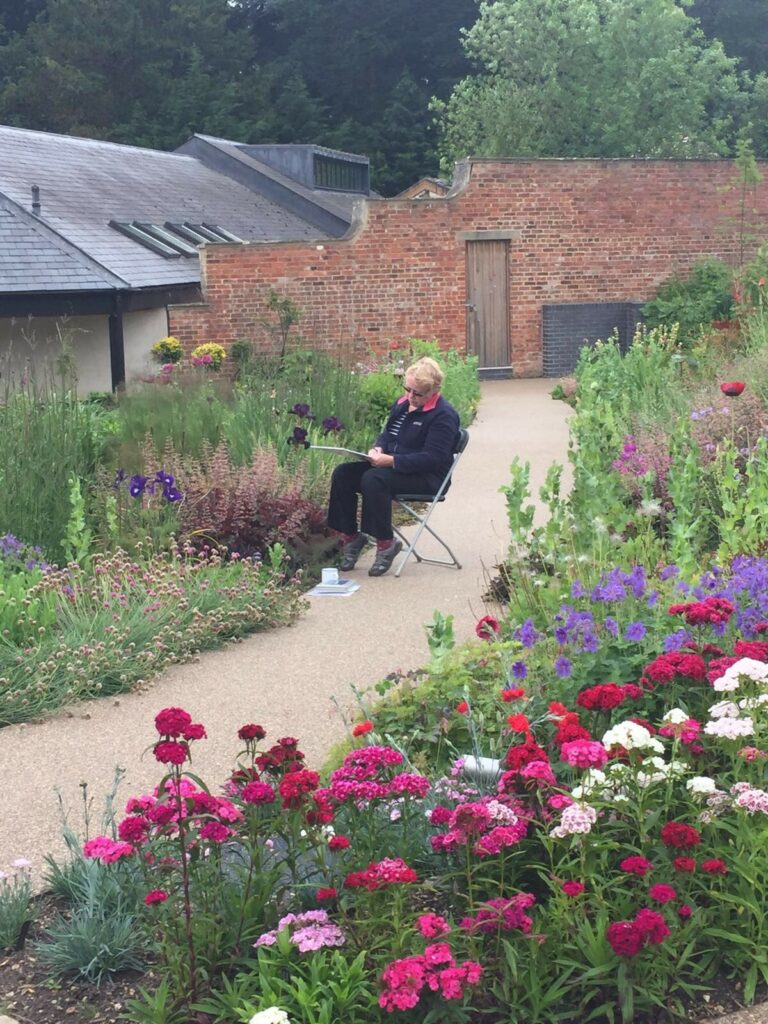
Written for Cotswold Life Magazine.
The walled garden at The Museum in the Park has been unloved and derelict for over fifty years. Now it’s been given a new lease of life and a lot of love, thanks to a concerted community effort, including the staff and Friends of the Museum, volunteer groups and local mosaic artist and passionate gardener, Cleo Mussi. Everyone has given hours and hours of their free time to get this project off the ground – over the past nine years, each stage has been carefully managed. It is a truly personal project for many involved, and will be a huge asset to the community of Stroud, a place of learning, contemplation and creativity.

A Victorian garden, revived
Once a cuttings and vegetable garden for the 18th century wool merchants house, sales particulars from 1891 detail a very conservative list of accessories – two hoes, a ladder, trowels – it was a very Victorian and practical garden with very little colour or care, which has now been entirely transformed. From the very beginning, the terrain of the garden consisted of a mound of earth and one of the first challenges was going to be ‘how can we make this work for visitors to our garden.’

A Master Plan….
Every Monday, a group of volunteers, hailed as ‘heroes’ by Ann Stephen (Learning Programmes Officer) did back breaking work on the site, planting the hawthorn hedge, breaking up palettes, sifting earth, weeding and watering. Diggers worked on the area to create what you see today – an amphitheatre and series of curved benches that lead you up to the pavilion overlooking the garden and parkland beyond. A Master Plan was drawn up in 2012, from which all funding applications came. An important part of the brief was that the garden act as a multi purpose space complete with Learning Pavilion, an area for concerts or plays, raised beds used for growing tulips and vegetables that could be sold at the Museum. Now the fundraising could really begin….

Local support for this project
The Secret Artist Fundraiser was one of the events that gave the project momentum, held in 2012 and supported by many local artists, organisations and individuals. Stroud District Council supported the project wholeheartedly, and Arts Council England awarded funds to start clearance work and events relating to the new garden. Friends of the Museum raised over £10,000 through events, activities and public donations. In May 2014, work started on the construction of the pavilion in conjunction with Austin Design Works. With the support of many charitable trusts (too many to mention here) the pavilion won an award for ‘an elegant and bold modern addition in a sensitive historic setting’ in the Stroud Town Council Civic awards. The entrance area was then completed and the bones of the new garden revealed.

Cleo’s glorious garden design
With all the heavy building work now complete, the team could concentrate on the planting – putting some life and colour back into the garden. Cleo Mussi, a long time supporter of Museum in the Park, enthusiastically offered her services and is now ‘Patron of the Walled Garden’, “I am rather pleased with my new title!” As a local mosaic artist with an international following, she is also hugely passionate about gardening, with an eye for colour and an ability to view the garden as a whole, finished project. She was asked to create a planting scheme on a shoe string budget for the plot which is a third of an acre and is managed by teams of volunteers. With just a few hundred pounds, the focal plants and trees have been purchased and the rest donated, propagated, split and gifted.
Special plants selected for this garden
In the early part of her career, Mussi worked alongside Dan Pearson (eminent garden designer and winner of countless Chelsea Gold Medals) on his first Chelsea garden in 1993. Her own 3D mosaic paintings and sculptures very often feature plants and wildlife and much of her interest lies in the importance of nature, man’s place in the ecosystem, genetic modification and intensive farming. Sadly her work isn’t durable enough to stand the exposure to harsh winters, so it’s unsuitable for inclusion in the garden. Pearson kindly donated a huge and varied selection of irises, combined with a collection from Gary Middleton which will start to bloom in May.

This garden has a personal tie for Cleo, who points to a Rowan tree that came from her mother’s garden. She was a keen gardener, human biology teacher, and long time supporter and friend of the Museum. The rowan offers some height to the purple border, “I collect plants, gathered at every opportunity, divided, seeds collected, cuttings taken from my own garden. I love coloquial plant names, ‘Bunny up The Wall’, ‘Bomb Weed’, ‘Kiss me over the garden gate’ – these names often describe what we term as weeds, yet they define our landscape.”
As I take a tour of the garden with Cleo and Ann, I am struck by the many acts of generosity and focus on the garden as a space for everyone to enjoy for years to come. Without asking for, and accepting help from others, this garden would simply not exist.
Rare snowdrops from Colesbourne Park
There are unusual species of snowdrops donated by Sir Henry Elwes of Colesbourne Park, ‘Englands greatest snowdrop garden’ near Cheltenham. His grandfather was an avid plant collector and one of Cleo’s favourites is called ‘Wasp’, others include ‘Galanthus Hippolyta’ and ‘Glanthus nivalis pleniflorus’ or double headed snowdrop.
They have been planted at eye height in a raised bed, so that visitors can get a really close look at them – it’s an example of the thought that’s gone into the planting. Dame Margaret Weston, a patron of the museum and a fellow of Newnham College, Cambridge donated some unusual irises from the universities ancient collection, and there are some ferns by the entrance that are alleged to have originated from Agatha Christie’s famous fernery in her Devon garden.
These plants are rare and collectable, giving the garden another layer of depth and beauty. Days Cottage Orchard, near Gloucester, donated fruit trees of heritage varieties – some are even on an endangered list – pear and apple trees, which they hope will provide shade. The idea (as yet unrealised) is to create a wild flower meadow amongst these trees, so we will wait and see!

The Artisan Plantsman
Cleo’s first preoccupation with planting was to assess the light source and soil, “I’m not a professional gardener, but I’m a confident one. I’ve been gardening for over thirty years and come at it with a less scientific and more creative approach. Nothing is too precious, if something goes wrong, it’s ok we can move things around, learn from it.” This ‘artisan plantsman’ approach has loosened up the whole process and made it a truly enjoyable one, “Starting from scratch enables us to make bold decisions.” Being a walled garden it is a warm and sunny patch which is a challenge in itself, “We have planted trees to give height and provide shade. This is a young garden, it’s in it’s infancy and seems to have established well. It’s a work in progress.”
Bonkers Border, Bobbly Border, The Hot Bed and more….
The garden is naturally split into fourteen different areas, with six obvious borders, each with it’s own affectionate name, ‘Bobbly Border’ (topiary), ‘Bonkers Border’ (bright swathes of colour), ‘The Hot Bed’ (filled with Mediterranean plants), ‘The Red Hot Bed’ (red and purple plants), ‘The Purple Complementary’ (purple plants only), ‘White Border’ (white and silver planting including the special snowdrops) and ‘The Fernery’.

Unless you’re a keen gardener, look away now! Here is a list of just some of the plants in ‘Bonkers Border’ many with wonderfully bonkers names – Ecinacea Double Scoop Mandarin anyone?
Bonkers Border Plant List
Erigeron karvinskianus ‘Profusion’ (Mexican Fleabane)
Salvia Bulleyana
Paeoniasuffruticosa – tree peony
Sedum ‘Ringmore Ruby’
Ophiopogonplaniscapus ‘Nigrescens’ – Lilyturf
Geum ‘Lady Stratheden’
Geum ‘Mrs Bradshaw’
Papaver orientale ‘Patty’s Plum’
Rosa ‘Heathcliff’ – David Austin rose ‘Heathcliff’
Gaillardia × grandiflora ‘Burgunder’ –blanketflower
Papaver orientale ‘Allegro’ – Oriental Poppy
Echinacea purpurea ‘Prairie Splendor’
Ecinacea Double Scoop Mandarin
Canna indica ‘Kreta’ (Island Series)
Papaver Orientale Allegro
Crocosmia ‘Emily Mckenzie’ – montbretia
Verbascum ‘banana custard’ – mullein
Climbing Hybris Tea Rose – Etoile de Hollande
Kniphofia ‘Timothy’ – red hot poker
Paeonialactiflora ‘Nippon Beauty’
Malus ‘Evereste’ – crab apple Evereste
Cistus incanus subsp. Creticus – rock rose
Tree Lily ‘Yellow Rocket’
Echinacea Milkshake
Lychniscoronaria- rose campion
kerria japonica
Clematis viticella ‘Abundance’
Shrub Rose ‘Abraham Derby’
Cytisus ‘Burkwoodii’ – broom
Cistus × corbariensis – white rockrose
Lavatera ‘Burgundy Wine’ – tree mallow
Clematis ‘Kardynal Wyszynski’
Papaver orientale ‘Allegro’
A beautiful garden all year round
Cleo ideally wanted plants that flowered throughout the year, even the hawthorn hedge is layered with Rosa Ragusa that produces large rosehips in the winter months. There is an auricular theatre, a tulip bed for cutting and a border full of zinnias for bedding. My favourite border is the Mediterranean border, adjacent to the Learning Pavilion. It is filled with plants that transport you to a sunny holiday on a Tuscan hillside – olive trees, rosemary, agapanthus, allium, sage, verbena, bay, fennel, thyme, lavender and giant cardoons……it’s glorious. Come summertime, it will be a stunningly colourful and highly scented border and I can’t wait.
Fig, mulberry and quince
Further up the garden, along the hoggin path, past the hawthorn hedgerow, Cleo and her team plan to plant fig, mulberry and quince trees and espalier them across the hot, red brick walls in order that they fruit abundantly in the summer months.
Plants are peaking through the fertile soil, a first glimpse of what will emerge and flourish in this pretty courtyard garden. So now it’s time for the townsfolk of Stroud and beyond to come and enjoy the flowers, events, concerts….or to simply spend peaceful hours in nature. It’s time for the garden to come into its own, mature and develop, to serve our community as it was intended.
Painting Workshops with Pegasus Art
Local art shop, Pegasus Art, has seized the opportunity to use the pavilion and garden as the ideal base for watercolour painting workshops with local art tutors Alison Vickery and Richard Callingham. Spend the day in these lovely surroundings, with so much to hand to draw upon for inspiration and a lovely pavilion in which to gather for a delicious lunch. Dates for these workshops are 10th June, 8th July and 5th August from 10am – 4pm, costing £75 including a summery light lunch prepared by the Pegasus team. Booking can be made online (see below) or by calling 01453 886560. Painting en plein air at the museum – it seems a perfect pairing.
The Walled Garden was officially opened in October 2016, but I think the advent of Spring will fling open the doors, and The Summoner will welcome you inside.
